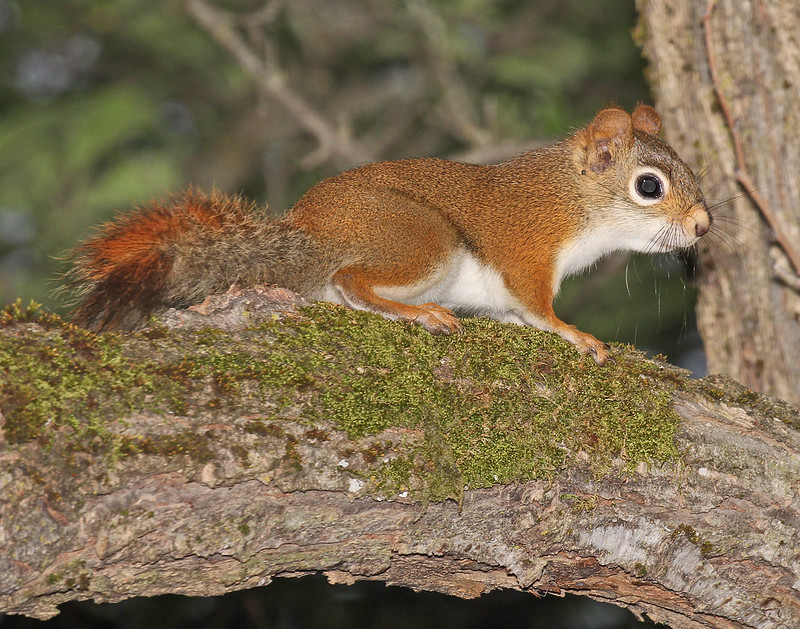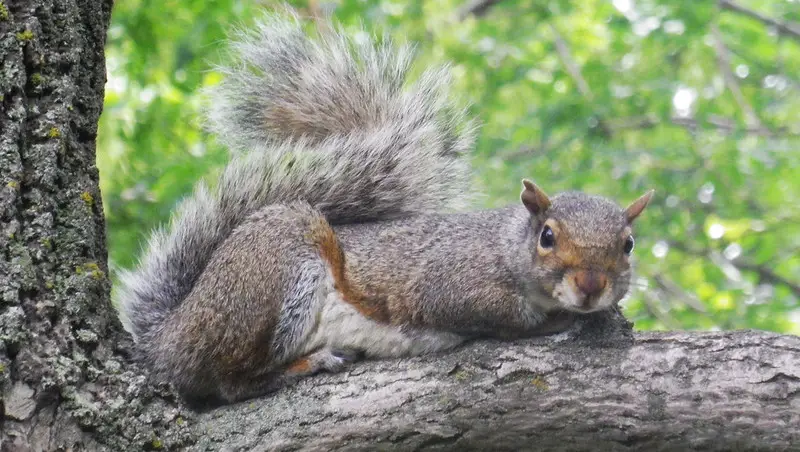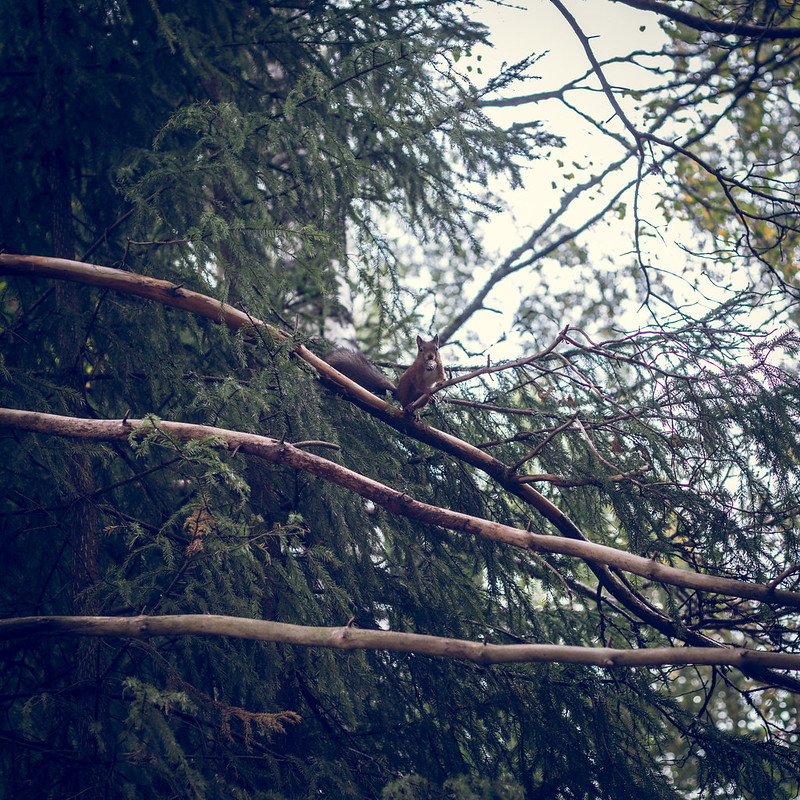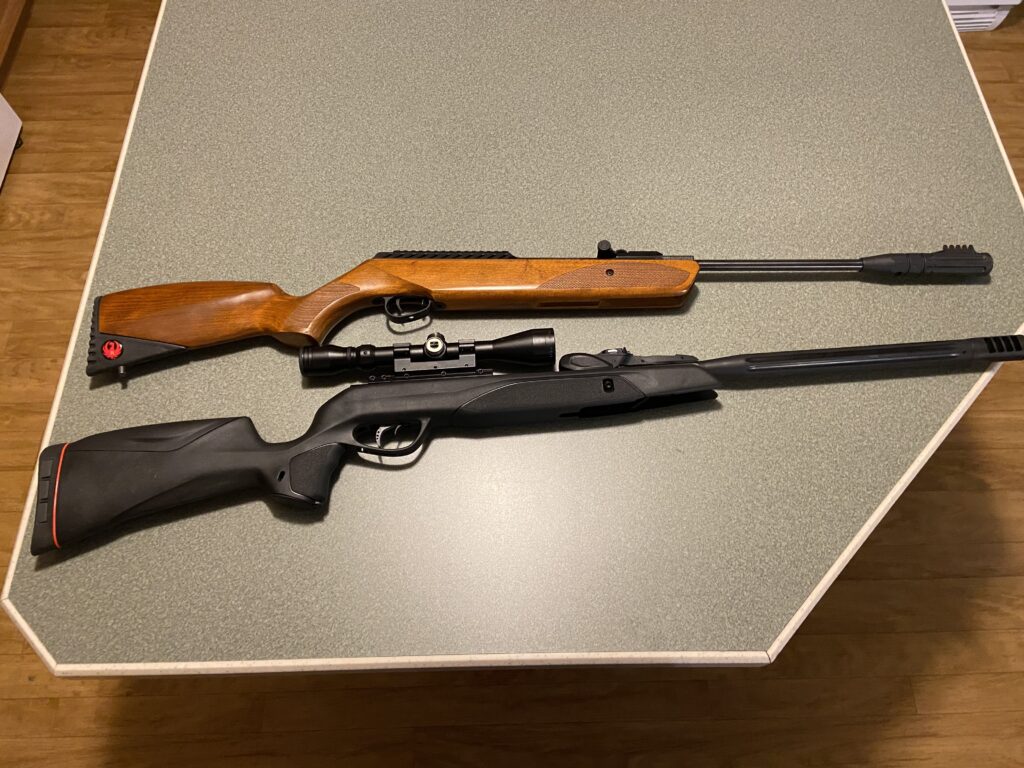Squirrel hunting is one of the cheapest and fastest ways to learn how to hunt any animal. Hunting squirrels improve your marksmanship skills, field craft, and use of camouflage.
Hunting squirrels is also an excellent way to introduce youths to the sport of hunting, reduce some of the local pests, and even put food on the table. But here I am going to get into trouble; it is also the perfect boredom killer while deer hunting. More on that later!

Where do squirrels live?
Squirrels generally live in wooded areas and, aside from ground squirrels, make their homes and winter nests in trees. Trees like the maple, elm, or pine also provide squirrels with tree nuts, flowers, and buds they need to survive.
And the trees benefit from having the squirrels around. The gray squirrel, in particular, helps by scattering and burying tree nuts over a wide area. The unrecovered nuts take root and become new trees.
Once you are in suitable habitat, squirrels are easy to locate. They can be seen and heard leaping from branches, scurrying across dry leaves, or whistling and barking warning alarms to each other.
Red squirrels are active all year, solitary in nature, and quite aggressive and vocal about defending their property. Their five-acre territories will contain at least one centrally located midden—a large pile of tightly packed cones and nuts stored as a future food source.
Gray squirrels will litter the ground with the gnawed and discarded remnants of pine cones and acorns. The gray squirrels’ habit of typically eating in a known safe spot will be evidenced by this garbage collection and is proof of their residence.

Hunting squirrels, seeing the forest creatures for the trees.
When you start hunting squirrels, like when you first begin deer hunting, the easy mistake is to look for the whole squirrel. Sometimes, this pays off. Squirrels rarely stop moving when they feel safe. When they are alarmed, they announce their locations with loud, shrill barks and fidgeting, bushy tails.
But when a squirrel stops moving, it can become nearly invisible. Motionless squirrels blend into the woods’ swirling leaves and rough tree bark. Now spotting a squirrel becomes a matter of noticing the tiniest portion of it, like a color change on a tree trunk, a hairy tail on a branch, or the slightest movement in the crook of a tree.
Squirrel hunting basics.
The two methods of squirrel hunting are stand hunting (passive) and still hunting (active). Stand hunting squirrels requires remaining motionless using either a raised platform or a seated ground position. Still hunting squirrels means stealthy, short walks followed by periods of visual scanning.
Both methods of squirrel hunting are effective, but each has its drawbacks.
The still method of squirrel hunting.
Still hunting squirrels is a severe test of your ability to be stealthy. Squirrels, especially red squirrels, are nature’s most trusted alarm system. If a squirrel busts you, you will know it. And the second that squirrels alarm goes off, every animal in the woods will go quiet, stop moving, and turn in your direction.
Squirrels have excellent vision. They can see anything in front, below, above, or alongside them without moving their heads to refocus. While their eyesight suits a life of leaping from treetop to treetop, it also serves them well, avoiding predators. Squirrel vision is heavily based on movement, and given their elevated position; you are unlikely to approach more than one at a time unseen.
Squirrels also have incredible hearing. As a squirrel hunter, you have to be aware that a squirrel can hear sounds at more than twice the range you can hear them. And a squirrel’s sense of hearing instantly lets it know the direction (to within a matter of degrees) the sound is coming from.
Still hunting squirrels, therefore, may seem like an impossible feat. They hear every step you take; even the slightest arm movement is a giant flag waving a warning at them. Fortunately for you, squirrels are often busy, noisy critters constantly moving and, therefore, prone to being surprised.
Given the degree of difficulty, the only reason to still hunt squirrels, rather than using the still hunting method, is to locate them.

Using the stand method for squirrel hunting.
Hunting squirrels from an elevated platform or while seated on the ground works well, but only if you have already scouted for and located a population of squirrels residing in the area.
Begin by approaching your stand area without alerting the squirrels to your presence. Don’t worry; the squirrels won’t leave food sources and homes for long. If your entry isn’t as quiet and stealthy as it would while still hunting, let the place ”cool off” for 15 minutes after getting settled into position.

Squirrel hunting with air rifles.
You can hunt squirrels with shotguns or center-fired rifles, but I prefer to use either an iron-sited .22 or a scoped .177 air rifle.
For the record, I own the Gamo Swarm Maxxim G2 .177 Cal Multi-Shot Pellet Rifle and the Rugеr Impact Max Elite .22 in the photo above. Both come with scopes, but I love using iron sites and left the Ruger bare.
Using an air rifle limits the noise you make taking a squirrel, which often leads to a fatal surprise for the next squirrel you encounter. However, using the Gamo or Ruger I use, with their built-in noise dampers, I can hunt squirrels, even while hunting deer.
Shooting squirrels while deer hunting? Yes, and for two reasons.
First, there’s nothing more satisfying than permanently silencing an alarming red squirrel. I’m 90% sure no deer will come into my stand with a red squirrel shrieking at the top of its lungs. So, that quick, muffled pop is worth the price for the blessed silence that follows.
Second, I get bored stand hunting deer. Adding squirrel hunting to the mix livens things up, keeps me scanning, and helps me stay awake.
I’ve only ever had one problem while mixing these two hunts. Once, just after shooting a squirrel while I was seated on the ground, I noticed a small buck standing just a few yards away. Trying not to be spotted while reaching for my rifle, I wasn’t 100% certain which rifle I was trying to shoulder. That buck was too small to take, but more importantly, it wasn’t frightened off by my shooting of the squirrel.
As to my preferences when using an air rifle; I site both rifles for 20 yards and buy the more expensive pellets. I haven’t done any scientific research on this, but sighting at this range allows me to take larger grey squirrels at up to 30 yards (with 1/2 hold over). Red squirrels are much smaller, but the scoped Gamo has smoked them a few times at that range as well.
Where do you aim? Center mass, and don’t overthink it.
Squirrel hunting gear.
Squirrel hunting isn’t like going on a safari. You can be successful with nothing more than work boots and a comfortable dark green or brown jacket.
You can add a set of binoculars to your Squirrel hunting gear if you want. I’ll admit, they come in handy at times. My vision has slipped with age, but even young eyes have trouble spotting a gray squirrel tail draped over a gray limb. I prefer Bushnell Powerview 10×42 BoneCollector Binoculars—they are inexpensive and lightweight, and I also use mine for coyote and deer hunting.
What about using a squirrel caller? I have found squirrel callers do two things, and only two things. They will make a squirrel stand up (if you use a young squirrel distress caller) and look around; they also sometimes bring in foxes and coyotes. What they have never done for me is bring in a squirrel. So, worth the added weight if you need a sneaky squirrel to pop its head up—but not much more than that.
When is the best time to hunt squirrels?
The most significant squirrel activity periods occur in the morning and late afternoon. On warmer days during the summer, squirrel activity is severely limited from 10 a.m. to 2 p.m.
During most squirrel hunting seasons, squirrels begin moving about 1/2 hour before sunrise and cease all movements about 1/2 hour before sunset.
Squirrel activity drops off quickly as temperatures dip and winds increase.


